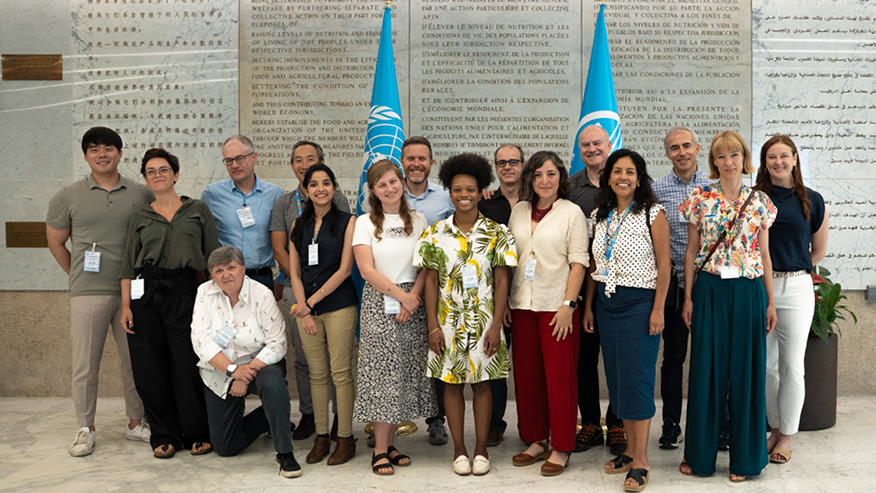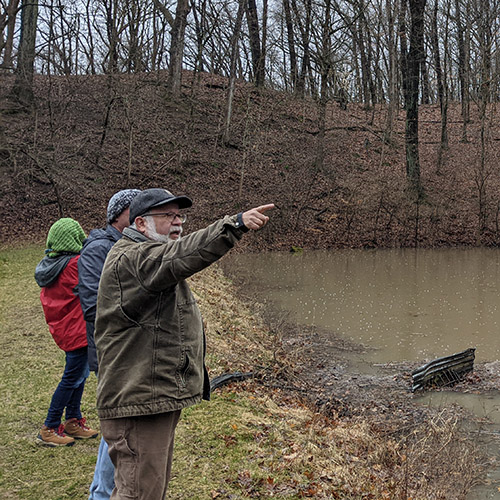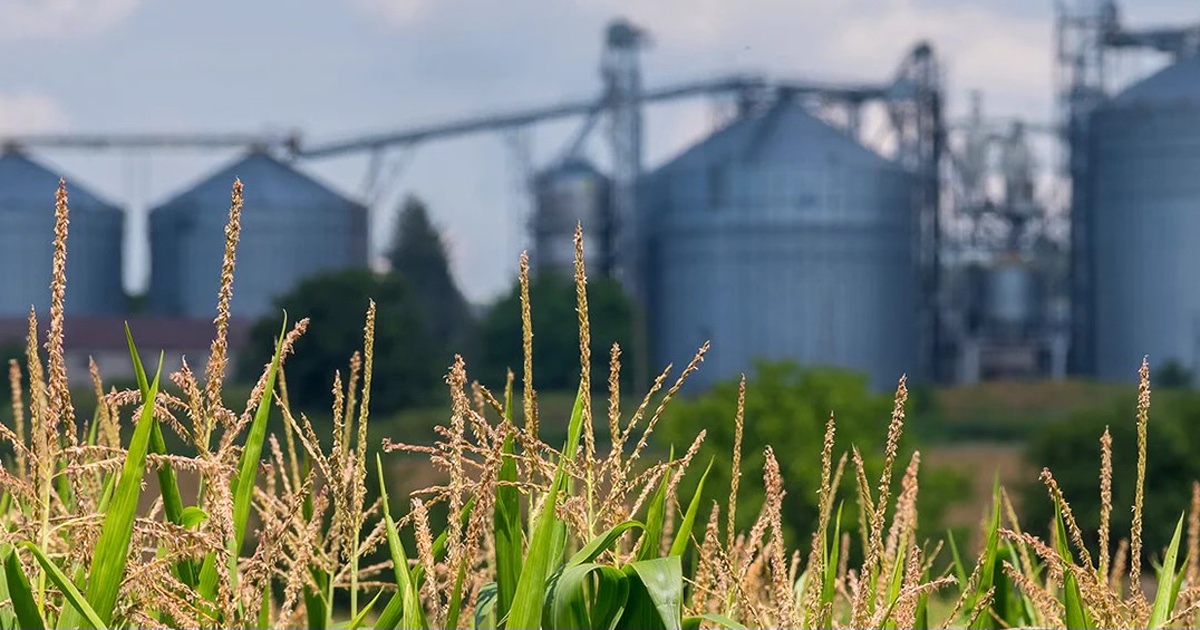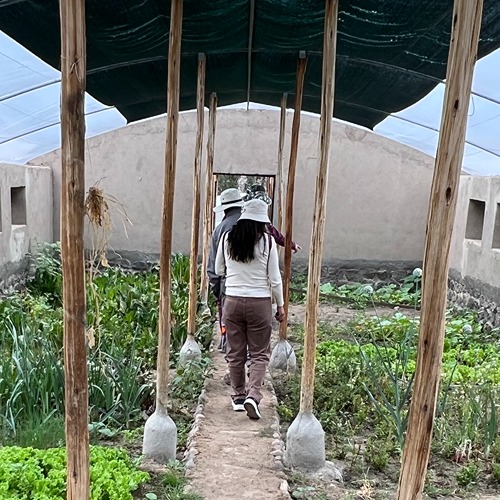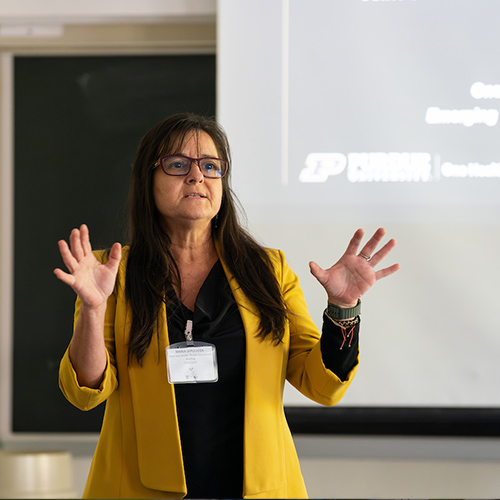Mobilizing AI to monitor forest growth and carbon sequestration
More than 1.6 million square miles of forests have disappeared since 1990, according to the Food and Agriculture Organization of the United Nations. That area exceeds the expanse of the seven largest U.S.states, and annual losses continue at a rate greater than the square mileage of Indiana.
The challenges posed by these numbers led the FAO Forestry Division and Purdue University to convene the Expert Workshop on AI-Enhanced Forest Growth Rates and Carbon Mitigation Potential in Rome. The June workshop was co-funded by Purdue’s Giant Leaps for Global Impact initiative and FAO’s AIM4Forests program.
“The workshop convened global leaders from science, policy and technology to explore how artificial intelligence can revolutionize forest monitoring and carbon accounting,” said Jingjing Liang, a Purdue associate professor of quantitative forest ecology who was joined at the workshop by Ankita Mitra and WookjinChoi, both Purdue PhD students in forestry and natural resources. “This workshop not only advanced scientific understanding but also positioned forests — and AI innovation — as essential pillars in the global response to climate change.”
In-person and online workshop participants included representatives of the FAO, International Governmental Panel on Climate Change, Global Forest Observations Initiative, European Space Agency, World Bank,Schmidt Sciences, Google, World Resources Institute and leading research institutions.
“Artificial intelligence is now part of our reality, and we must harness it to improve forest monitoring,” noted workshop participant Maria Sanz, scientific director of the Basque Center for Climate Change. “This workshop was key in bringing together diverse research groups working on different aspects — from remote sensing tofield data collection — and exploring how AI tools can connect these efforts to support more informed decisions for monitoring and managing forests.”
Liang served as an international consultant to the FAO during his 2024-25 sabbatical leave. His consultations included working with AIM4Forests, a global program launched by FAO and the United Kingdom of Great Britain and Northern Ireland to understand how much carbon the world’s forests have sequestered. The workshop extended those efforts by highlighting the importance of using ground-sourced data, global collaboration and AI to achieve their goals.
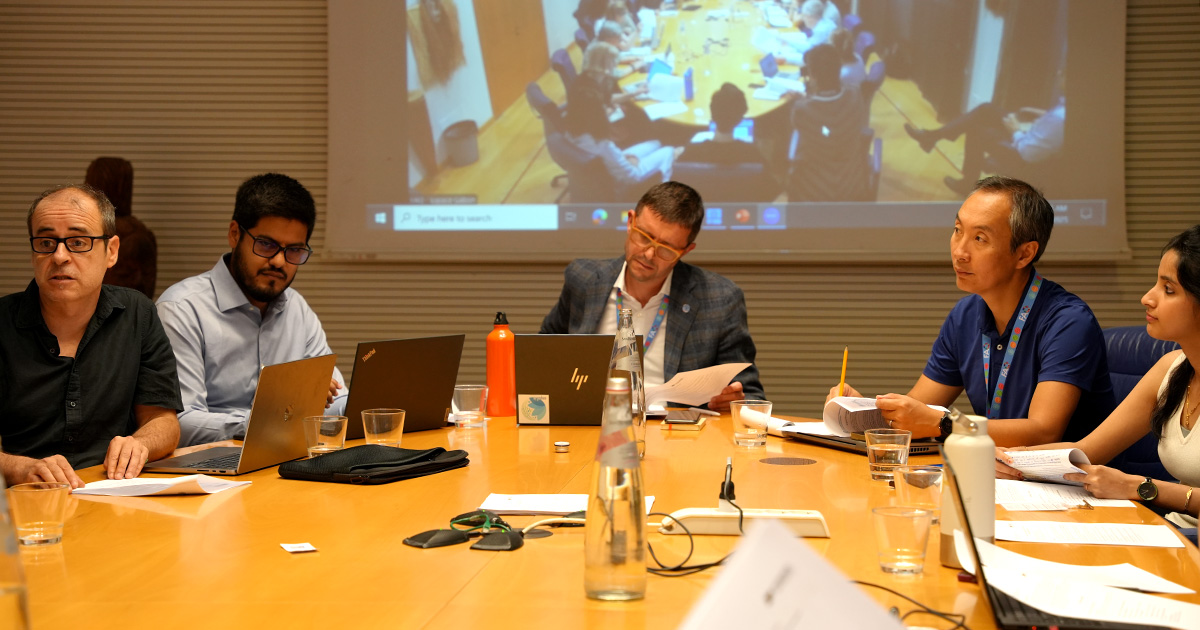 Pictured at far left is Javier Gamarra, an international consultant in the forestry division of the Food and Agriculture Organization of the United Nations. Second from right is Jingjing Liang, associate professor of quantitative forest ecology at Purdue University. Gamarra and Liang organized the Expert Workshop on AI-Enhanced Forest Growth Rates and Carbon Mitigation Potential in Rome. Credit: © FAO / Vanessa Vertiz Larrea.
Pictured at far left is Javier Gamarra, an international consultant in the forestry division of the Food and Agriculture Organization of the United Nations. Second from right is Jingjing Liang, associate professor of quantitative forest ecology at Purdue University. Gamarra and Liang organized the Expert Workshop on AI-Enhanced Forest Growth Rates and Carbon Mitigation Potential in Rome. Credit: © FAO / Vanessa Vertiz Larrea. “We have been working together on pushing forward open forestry sciences at a global level,” Liang said ofhis work with FAO. Liang and workshop co-organizer Javier Gamarra wrote about the importance of such work in 2020.
“Forest ecosystems sustain food, water and energy security, and human well-being, but deforestation and forest degradation are destroying a massive number of forests worldwide, rendering more than 40,000 tropicaltree species at risk,” Liang and Gamarra wrote. “Central to saving the world’s forest ecosystems, forest dataenable the quantification of deforestation and forest degradation and facilitate research into effective protection and conservation measures.”
And yet, Liang and Gamarra still see the need for more and better open forestry data, especially in tropical and other regions of the Global South. Many nations in the Global South, Liang noted, lack the capacity to manage their forests and develop their forestry capabilities. The MATRIX model harnesses data from over 1.8 million forest plots globally to reveal insights into forest dynamics on multiple scales and could become a valuable, transparent and reliable tool for researchers in any nation to estimate the dynamics of their forest carbon.
AI discussions focused on harnessing AI tools, particularly the MATRIX model and For-Growth platform, to improve the accuracy, scalability and policy relevance of forest biomass growth estimates. For-Growthintegrates AI with the Global Forest Biodiversity Initiative, which includes a forest database containing 1.3 million ground-measured sample plots.
Workshop presentations demonstrated how AI and machine learning, when integrated with global forest data, provide precise estimates of aboveground biomass growth. Two workshop sessions showed how theinnovative MATRIX model could serve as a cornerstone of this effort, Liang noted.
Breakout groups co-developed practical strategies for using AI-enhanced models in national greenhouse gas inventories, including improvements to model documentation, training programs and in-country capacity-building packages. With Peru and Kenya showing interest, such work is already creating momentum forcountry-driven adoption of AI-enhanced forest monitoring tools, Liang said.
The push for open access to global forest data has continued since the workshop. Participants are collaborating on a technical report about how to standardize and integrate forest carbon stock estimation.
Workshop participants also discussed possible ways to deal with data gaps and the needs of individualnations. “Experts tackled challenges in national forest inventories and measurement, reporting, and verification systems, emphasizing AI’s role in bridging data inconsistencies and boosting transparency,” Liang noted.
Among the workshop’s key outcomes was the groundwork laid for updating the International Panel on Climate Change emission factor database. This database helps countries estimate greenhouse gas emissions and removals.
“A final roundtable translated workshop findings into actionable steps for FAO leadership, identifying pathways for investment, scaling and policy adoption,” he said.

